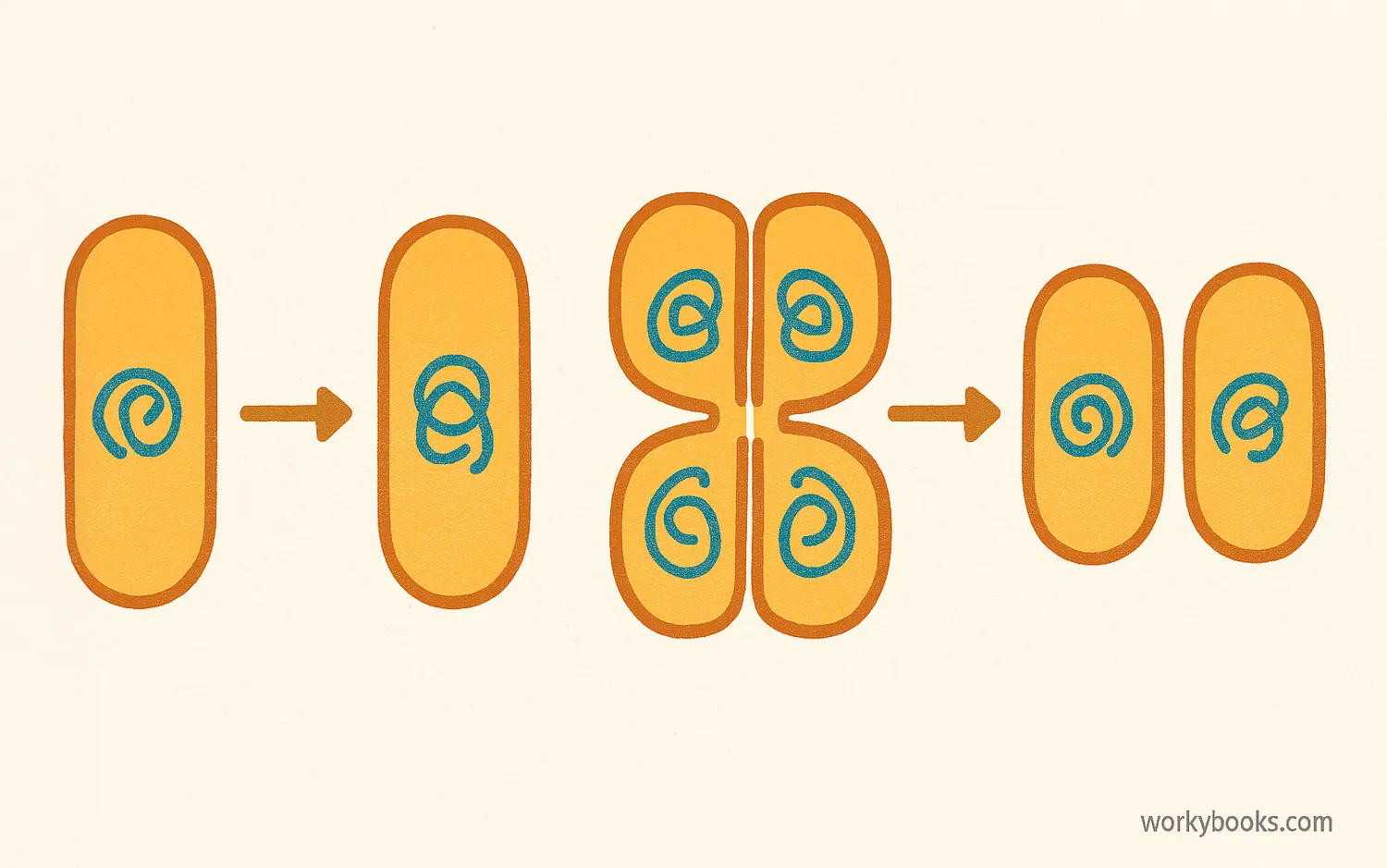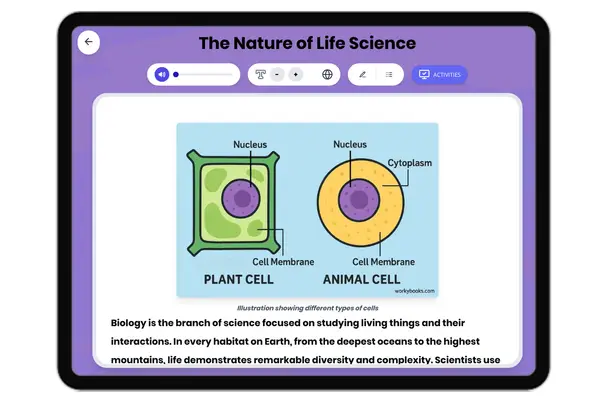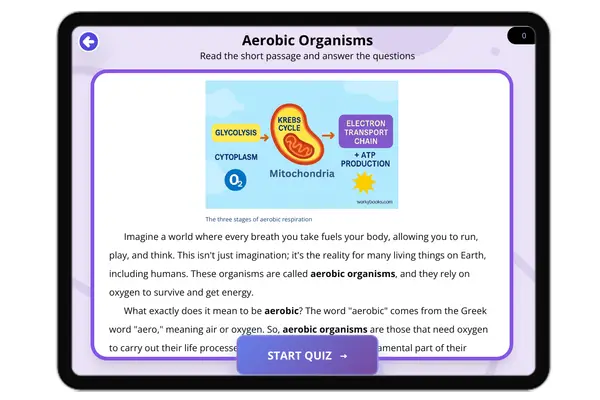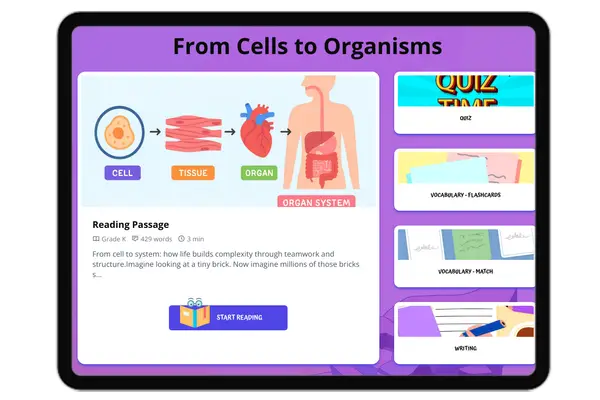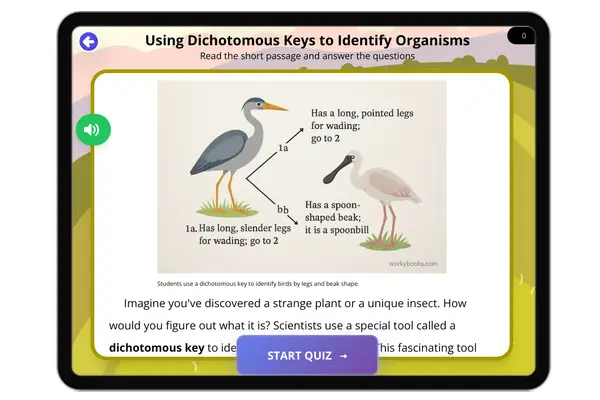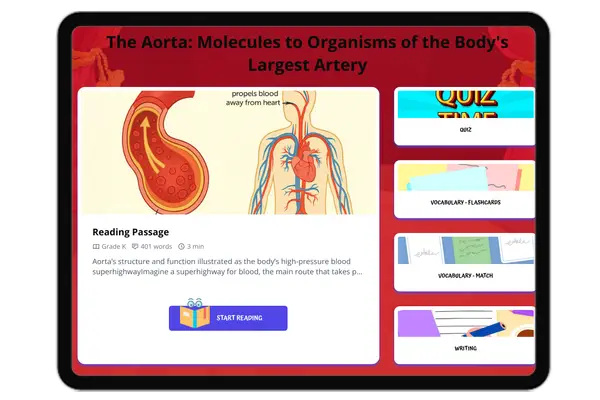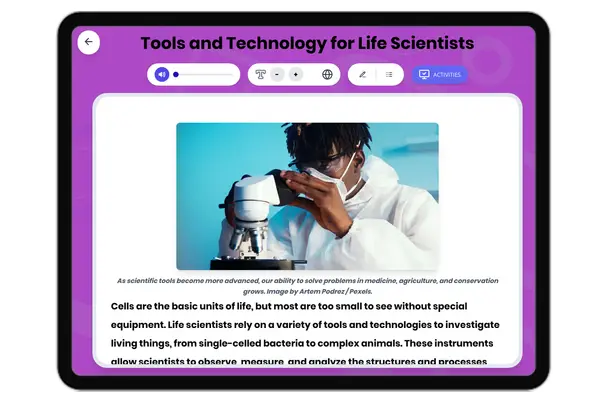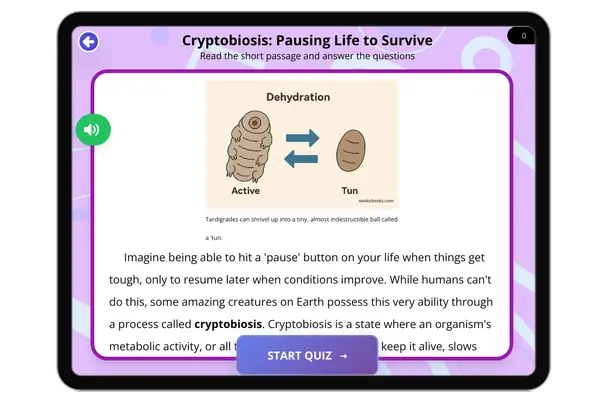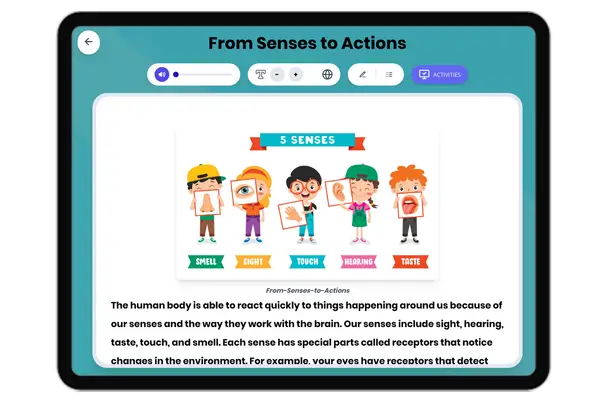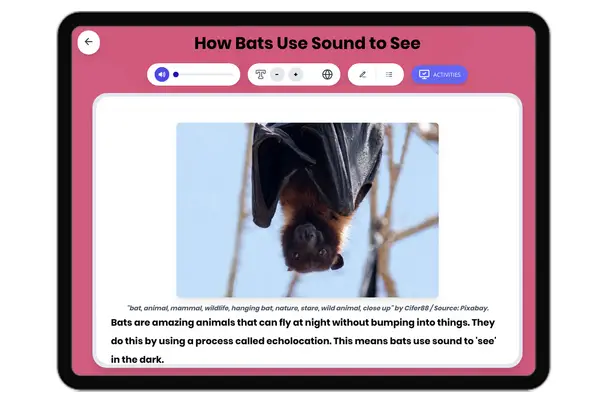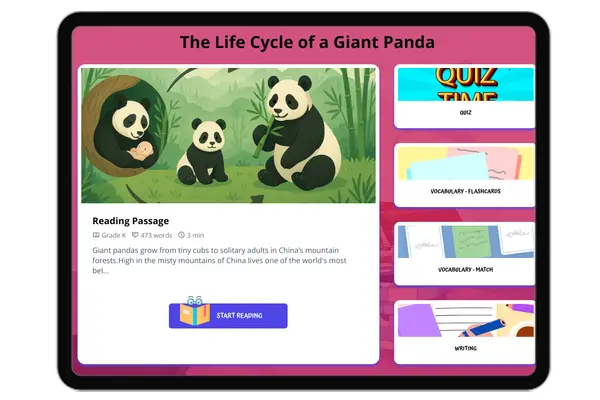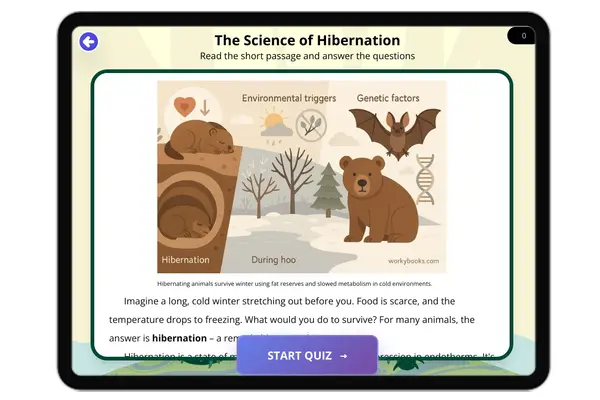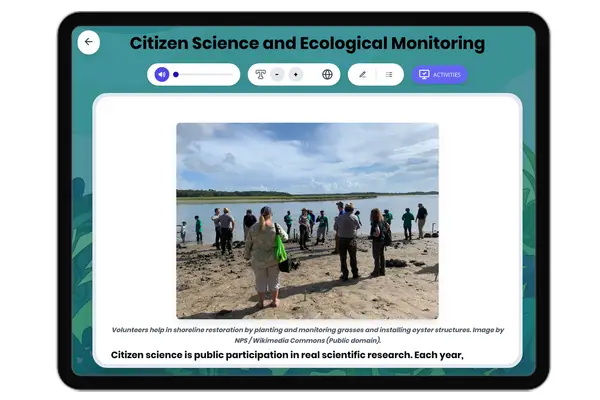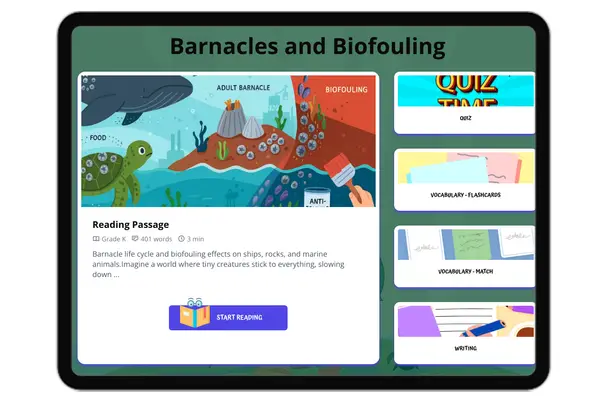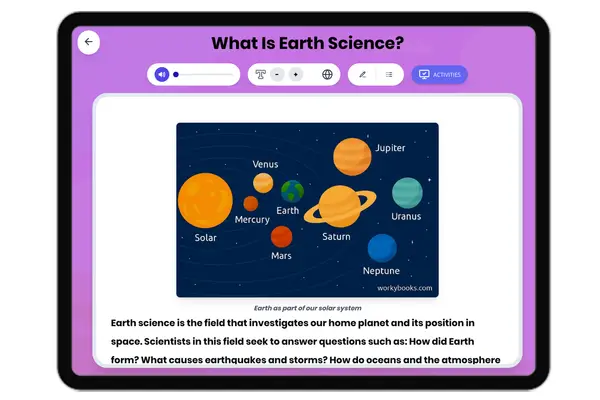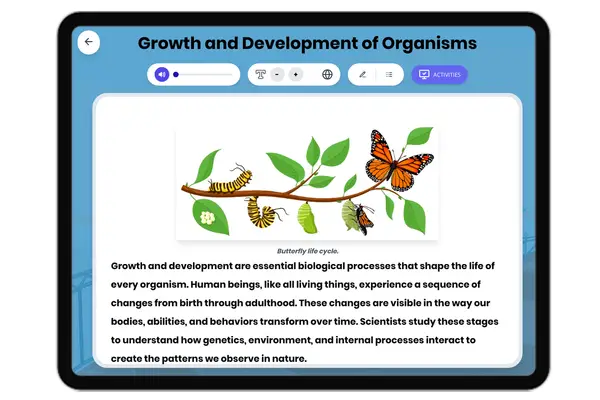Asexual Reproduction in Bacteria — Reading Comprehension
Premium Resource
Grades
- 6
PRINT+DIGITAL RESOURCE
This learning resource is available in interactive and printable formats. The interactive worksheet can be played online and assigned to students. The Printable PDF version can be downloaded and printed for completion by hand.
About This Reader
This audio-integrated passage for Grade 6 students delves into the fascinating world of asexual reproduction in bacteria, specifically focusing on binary fission. It explains how these tiny organisms create genetically identical offspring without a partner. Aligned with NGSS standard LS1.B: Growth and Development of Organisms, the content covers key concepts like single-celled organisms, genetic material, and the rapid reproduction of bacteria. Students will learn essential vocabulary and understand the simple yet powerful process that allows bacteria to thrive. The passage, combined with interactive activities, offers a comprehensive learning experience on this core biological principle.
Perfect For:
👩🏫 Teachers
- • Reading comprehension practice
- • Auto-graded assessments
- • Literacy skill development
👨👩👧👦 Parents
- • Reading practice at home
- • Comprehension improvement
- • Educational reading time
🏠 Homeschoolers
- • Reading curriculum support
- • Independent reading practice
- • Progress monitoring
Reading Features:
📖
Reading Passage
Engaging fiction or nonfiction text
❓
Comprehension Quiz
Auto-graded questions
📊
Instant Feedback
Immediate results and scoring
📄
Printable Version
Download for offline reading
🔊
Read Aloud
Voice-over with word highlighting



